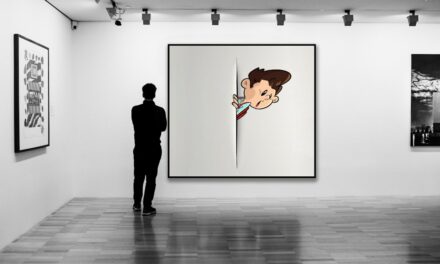Francesco Guardi, born in 1712 in Venice, emerged from a family steeped in the artistic traditions of the city. His father, a painter, undoubtedly influenced his early exposure to the world of art. Guardi’s formative years were spent in a vibrant cultural milieu, where the Baroque style was giving way to the burgeoning Rococo movement.
This transition in artistic sensibilities would later inform his own unique approach to painting. Although specific details about his education remain sparse, it is widely believed that Guardi was initially trained under the tutelage of his elder brother, Gian Antonio Guardi, who was also a painter. This familial connection provided Francesco with a solid foundation in the techniques and practices of Venetian painting.
As a young artist, Guardi was immersed in the rich tapestry of Venetian life, which would become a central theme in his work. The canals, palaces, and bustling piazzas of Venice served as both backdrop and subject matter for his paintings. His early exposure to the works of renowned artists such as Canaletto and Tiepolo further shaped his artistic vision.
While he admired their precision and grandeur, Guardi sought to develop a more intimate and atmospheric style that captured the essence of Venice in a way that was uniquely his own. This desire for individuality would set him apart from his contemporaries and lay the groundwork for his future success.
Summary
- Francesco Guardi was born in Venice in 1712 and received his artistic training from his elder brother, a successful painter.
- Guardi’s artistic style was heavily influenced by the work of his contemporaries, particularly the dramatic use of light and shadow by Caravaggio and the delicate brushwork of Canaletto.
- Guardi is best known for his atmospheric and lively depictions of Venetian cityscapes, capturing the city’s unique light and vibrant atmosphere.
- Venice served as a constant inspiration for Guardi, and he often depicted the city’s iconic landmarks, canals, and festivals in his work.
- Guardi’s legacy in art history lies in his innovative use of loose brushwork and his ability to capture the essence of Venice, influencing future generations of artists.
Artistic Style and Influences
Guardi’s artistic style is often characterised by its lyrical quality and a sense of spontaneity that distinguishes him from other Venetian painters of his time. While he was influenced by the precision of Canaletto’s cityscapes, Guardi’s work is imbued with a more emotive and atmospheric quality. His brushwork is fluid and expressive, often employing a lighter palette that evokes the shimmering light of Venice.
This approach allows for a sense of movement and life within his compositions, drawing viewers into the scenes he depicts. The interplay of light and shadow in his paintings creates an almost dreamlike quality, inviting contemplation and reflection. In addition to Canaletto, Guardi was influenced by the Rococo movement, which emphasised elegance and ornamentation.
This influence is evident in his use of delicate details and intricate compositions that capture the opulence of Venetian architecture. However, Guardi’s work transcends mere imitation; he synthesises these influences into a distinctive style that celebrates the beauty of everyday life in Venice. His ability to convey emotion through landscape and architecture sets him apart as a master of his craft, allowing him to resonate with audiences on a deeper level.
Notable Works and Commissions
Among Guardi’s most notable works are his enchanting views of Venice, which capture the city’s unique charm and character. One such masterpiece is “The Grand Canal with Santa Maria della Salute,” painted around 1765. In this work, Guardi presents a breathtaking view of the iconic basilica set against the backdrop of the bustling Grand Canal.
The painting is notable for its dynamic composition and vibrant colours, which evoke the lively atmosphere of Venice. The play of light on the water and the intricate details of the buildings reflect Guardi’s keen observation of his surroundings. Another significant work is “The Feast of the Ascension,” which showcases Guardi’s ability to depict large-scale events with a sense of grandeur and intimacy.
This painting captures the annual celebration in Venice, where boats filled with revelers navigate the canals amidst a backdrop of stunning architecture. The composition is alive with movement, as figures engage in various activities, creating a sense of community and festivity. Such works not only highlight Guardi’s technical prowess but also serve as historical documents that provide insight into Venetian culture during the 18th century.
Venice as Inspiration
Venice itself is perhaps the most significant influence on Guardi’s work, serving as both muse and canvas for his artistic expression. The city’s unique geography, characterised by its winding canals and ornate architecture, provided an endless source of inspiration for the artist. Guardi’s paintings often reflect the interplay between water and light, capturing the ephemeral beauty of Venice at different times of day.
His ability to convey the atmosphere of the city—whether it be the soft glow of dawn or the vibrant hues of sunset—demonstrates his deep connection to his surroundings. Moreover, Guardi’s depictions of Venice extend beyond mere representation; they encapsulate the spirit of the city itself. His works evoke a sense of nostalgia and longing for a time when Venice was at its zenith as a centre of trade and culture.
Through his art, Guardi immortalises not only the physical beauty of Venice but also its rich history and vibrant life. This duality—capturing both the tangible and intangible aspects of Venice—makes his work resonate with viewers even today.
Legacy and Impact on Art History
Francesco Guardi’s legacy is one that continues to influence artists and art historians alike. His innovative approach to landscape painting paved the way for future generations to explore new ways of representing urban environments. By prioritising atmosphere over strict realism, Guardi opened up avenues for artists to express their emotional responses to their surroundings rather than merely documenting them.
This shift in focus can be seen as a precursor to later movements such as Impressionism, where light and colour became central to artistic expression. Furthermore, Guardi’s work has been instrumental in shaping our understanding of Venetian art during the 18th century. His ability to capture the essence of Venice has made him an essential figure in art history, often studied alongside his contemporaries like Canaletto.
The contrast between their styles highlights the diversity within Venetian painting during this period, showcasing how different artists interpreted their environment through their unique lenses. As such, Guardi’s contributions extend beyond his individual works; they represent a broader dialogue within art history about place, identity, and representation.
Techniques and Materials
Guardi’s mastery of technique is evident in his use of oil paints, which allowed him to achieve rich textures and vibrant colours in his works. He often employed a technique known as “alla prima,” where paint is applied directly onto the canvas without waiting for layers to dry. This method enabled him to capture fleeting moments with immediacy and spontaneity, reflecting the dynamic nature of Venetian life.
His brushwork is characterised by loose strokes that create an impressionistic effect, allowing viewers to feel as though they are witnessing the scene unfold before them. In addition to his choice of materials, Guardi’s compositional techniques are noteworthy. He frequently employed diagonal lines to create depth and movement within his paintings, drawing viewers’ eyes into the scene.
His ability to balance intricate details with broader forms demonstrates a keen understanding of visual harmony. Moreover, Guardi often experimented with light effects, using contrasting tones to evoke mood and atmosphere. This innovative approach not only showcases his technical skill but also highlights his desire to push the boundaries of traditional landscape painting.
Exhibition History and Recognition
Throughout his career, Francesco Guardi gained recognition within artistic circles in Venice and beyond. His works were exhibited in various salons and galleries during his lifetime, attracting attention from collectors and patrons alike. Despite facing competition from more established artists like Canaletto, Guardi carved out a niche for himself through his distinctive style and emotive compositions.
His ability to capture the essence of Venice resonated with audiences who sought not just representation but also an emotional connection to their surroundings. In contemporary times, Guardi’s work has been celebrated in numerous exhibitions dedicated to Venetian art and landscape painting. Major galleries around the world have showcased his masterpieces alongside those of his contemporaries, reaffirming his place within art history.
The growing interest in 18th-century Venetian painting has led to renewed scholarship on Guardi’s contributions, further solidifying his legacy as one of Venice’s most important artists.
Guardi’s Place in the Venetian Art Scene
Francesco Guardi occupies a unique position within the Venetian art scene, straddling the line between tradition and innovation. While he was influenced by earlier masters like Canaletto, he distinguished himself through his emotive approach to landscape painting. In many ways, Guardi can be seen as a bridge between the rigid precision of Baroque art and the more fluid expressions that would characterise later movements such as Romanticism and Impressionism.
His ability to capture not only the physical beauty but also the spirit of Venice has earned him a lasting place in art history. As scholars continue to explore his contributions, it becomes increasingly clear that Guardi’s work transcends mere representation; it invites viewers into an intimate dialogue with one of history’s most enchanting cities. In this way, Francesco Guardi remains not just an artist but a vital storyteller whose legacy continues to inspire admiration for Venice’s timeless allure.
For a deeper understanding of the use of colour in art, check out the article on complementary colours and creating vibrant contrasts. This article explores how artists can use colour theory to enhance their work and create dynamic compositions. It complements the discussion of Francesco Guardi’s use of light and colour in his paintings, providing further insight into the techniques used by artists to achieve their desired effects.
FAQs
Who was Francesco Guardi?
Francesco Guardi was an Italian painter born in 1712 in Venice. He is known for his paintings of Venetian cityscapes and landscapes, and is considered one of the most prominent artists of the Venetian school.
What is Francesco Guardi known for?
Francesco Guardi is known for his paintings of Venice, particularly his cityscapes and landscapes. He is celebrated for his use of light and color to capture the atmosphere and essence of the city.
What is the style of Francesco Guardi’s paintings?
Francesco Guardi’s paintings are characterized by his use of loose brushwork and his ability to capture the effects of light and atmosphere. His style evolved from the more formal and precise style of his predecessors to a more impressionistic and atmospheric approach.
What are some famous works by Francesco Guardi?
Some of Francesco Guardi’s most famous works include “The Grand Canal in Venice with the Rialto Bridge”, “The Doge’s Palace and the Riva degli Schiavoni”, and “The Lagoon with Gondolas and the Bucintoro at the Molo”.
What influence did Francesco Guardi have on art?
Francesco Guardi’s innovative approach to capturing the essence of Venice and his use of light and color had a significant influence on the development of landscape and cityscape painting. He is considered a precursor to the Impressionist movement.


